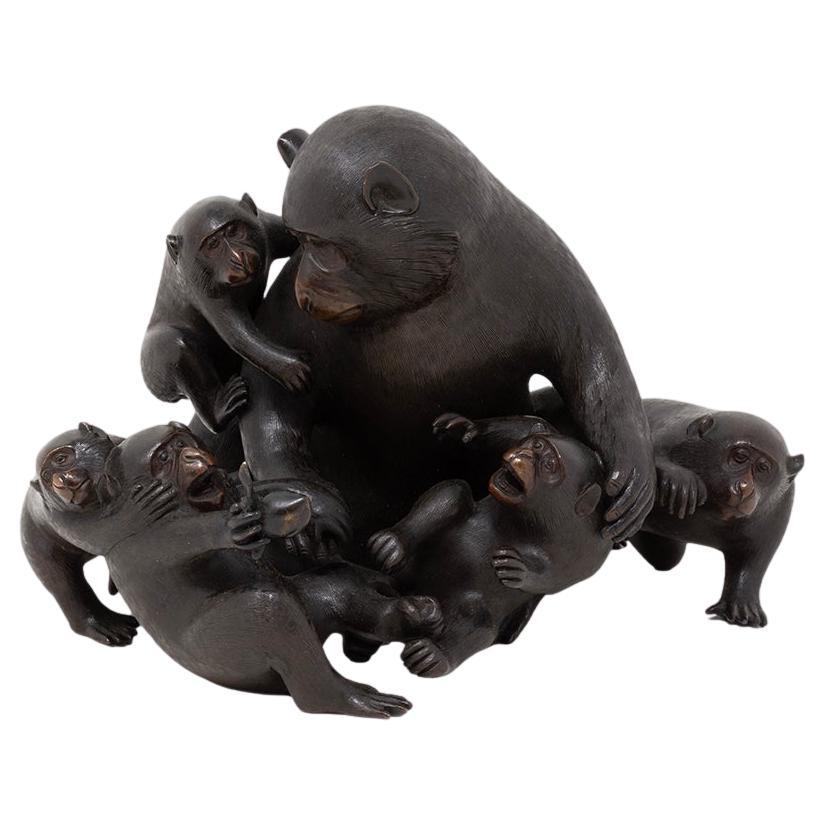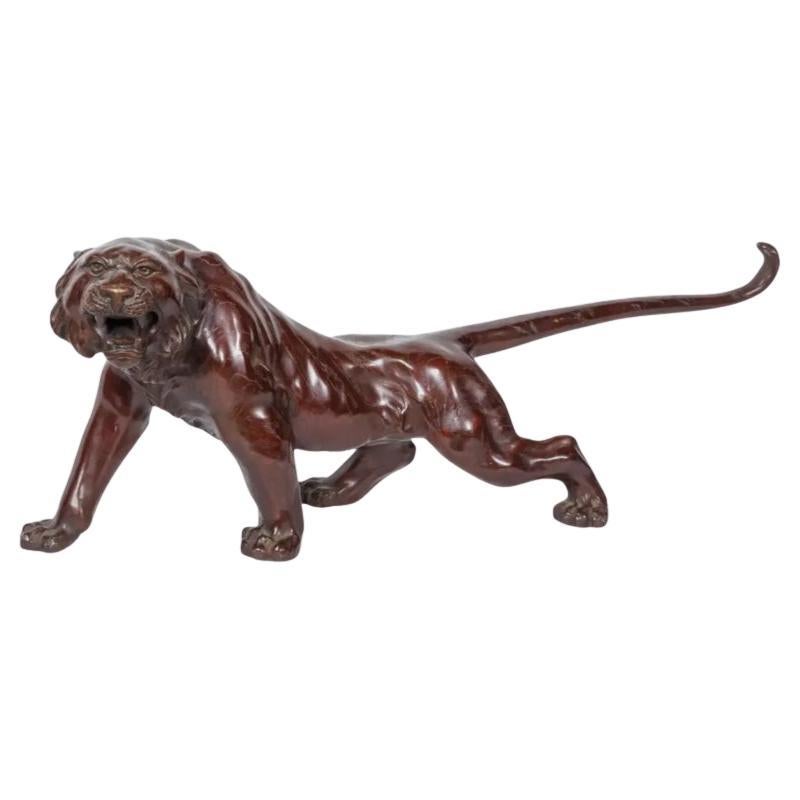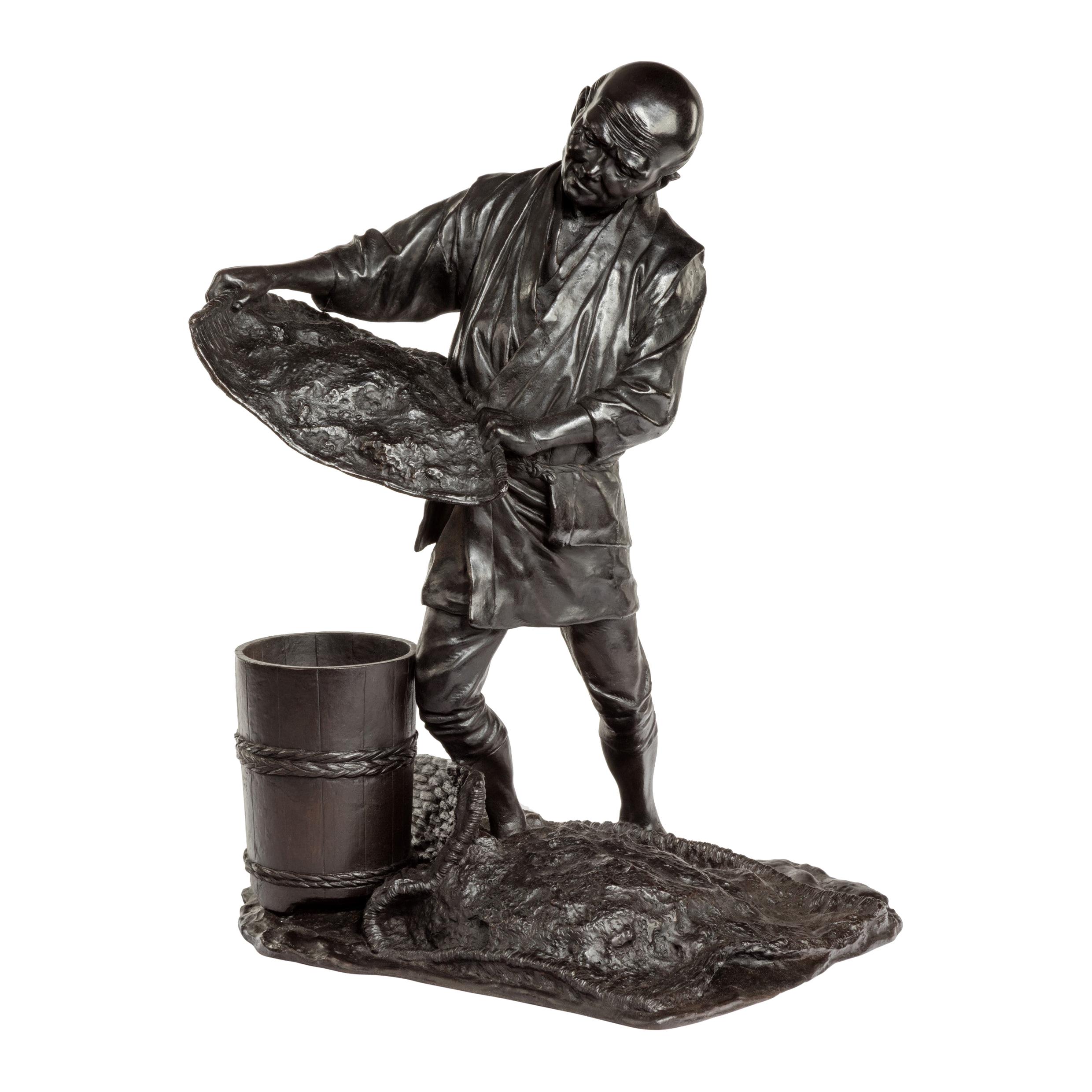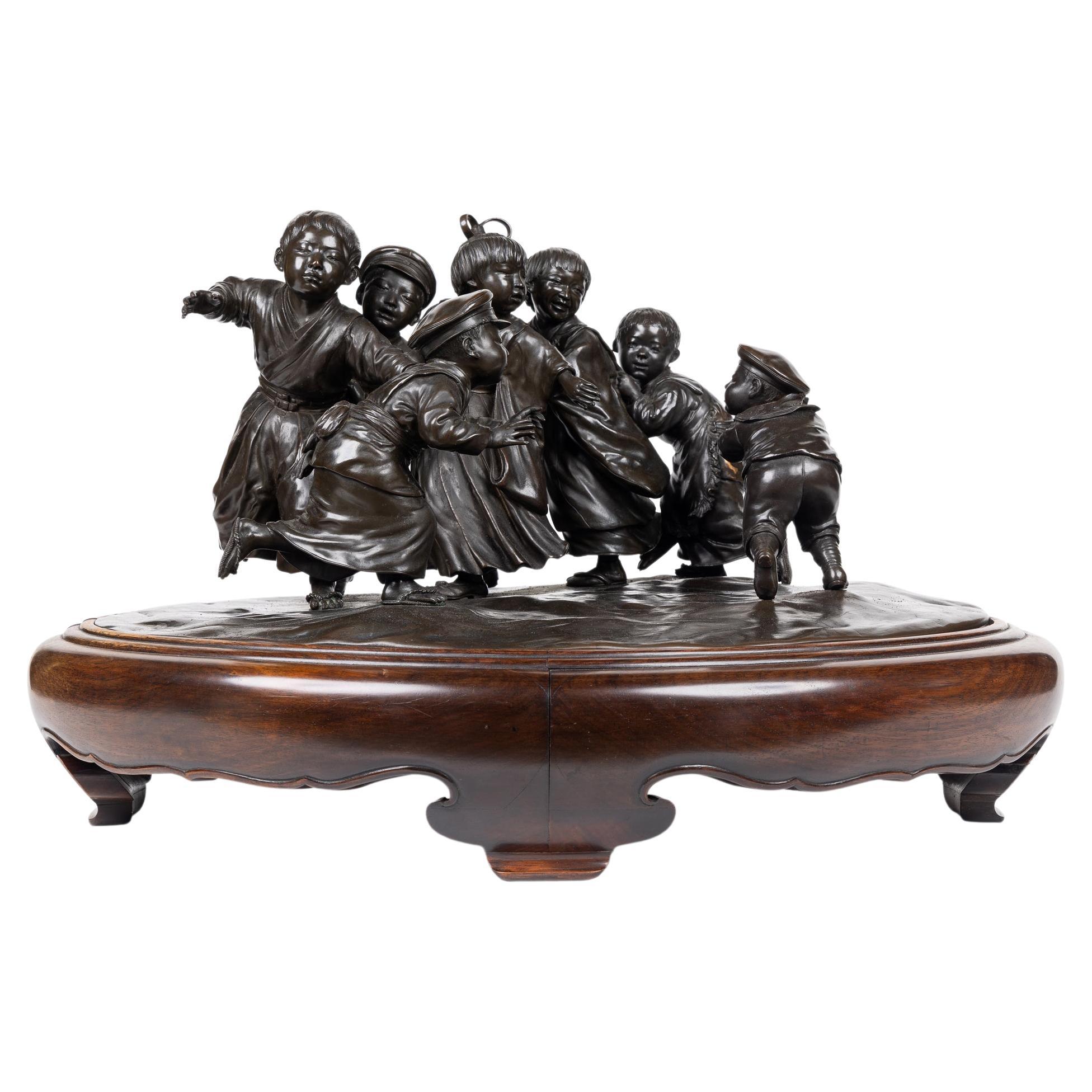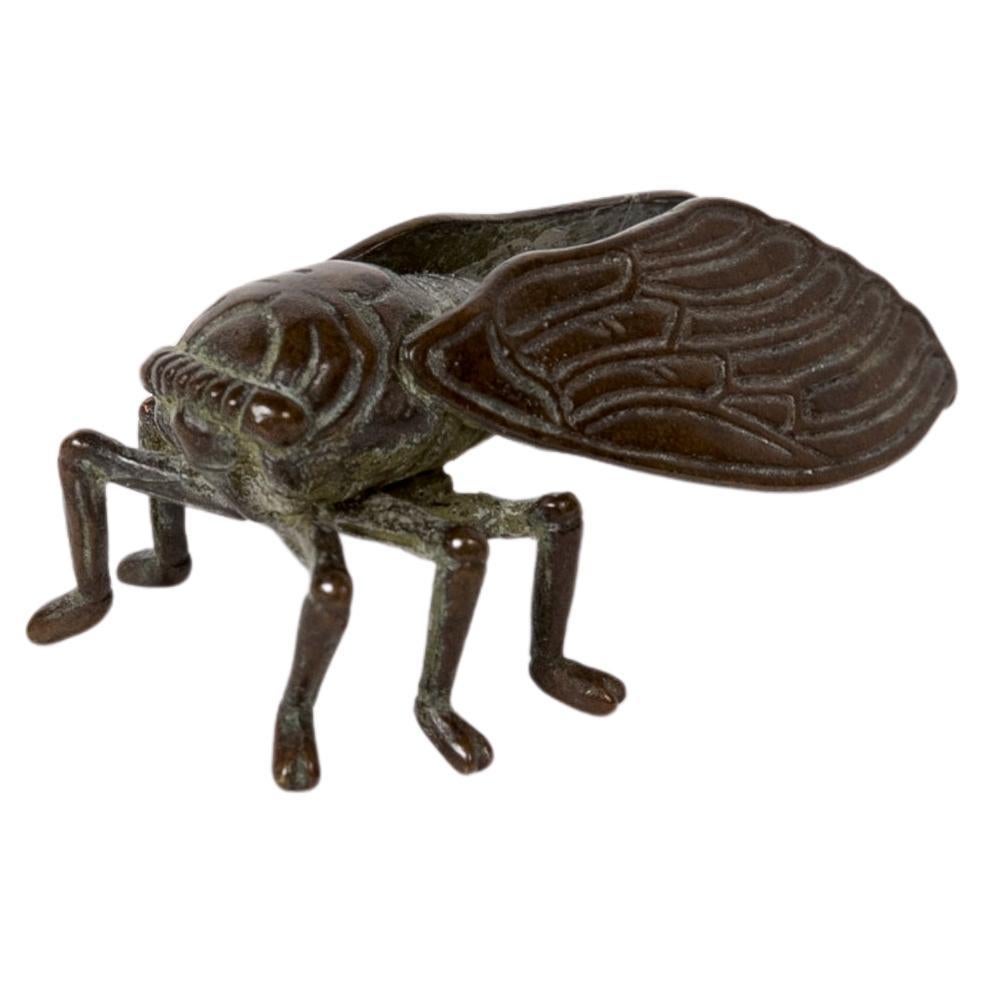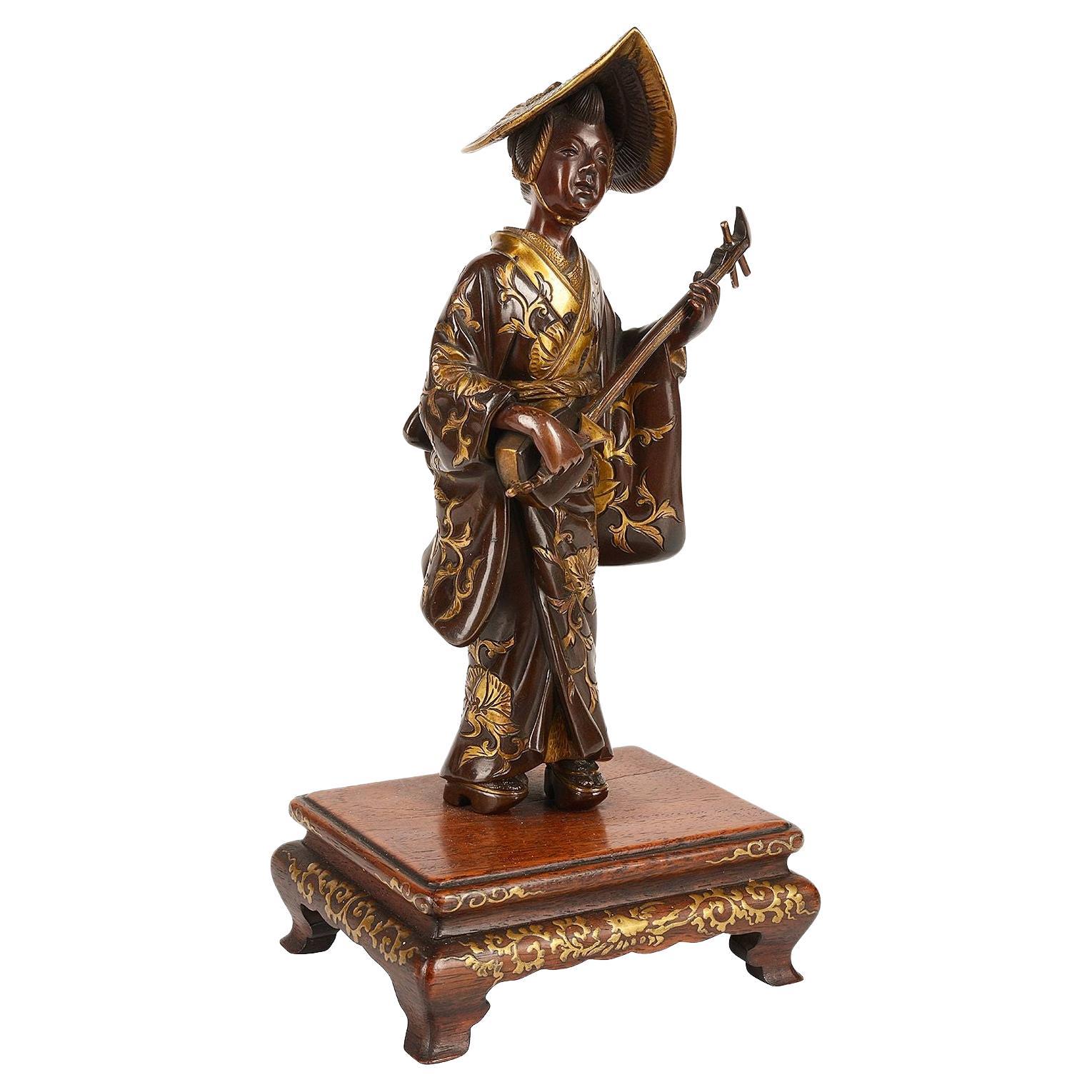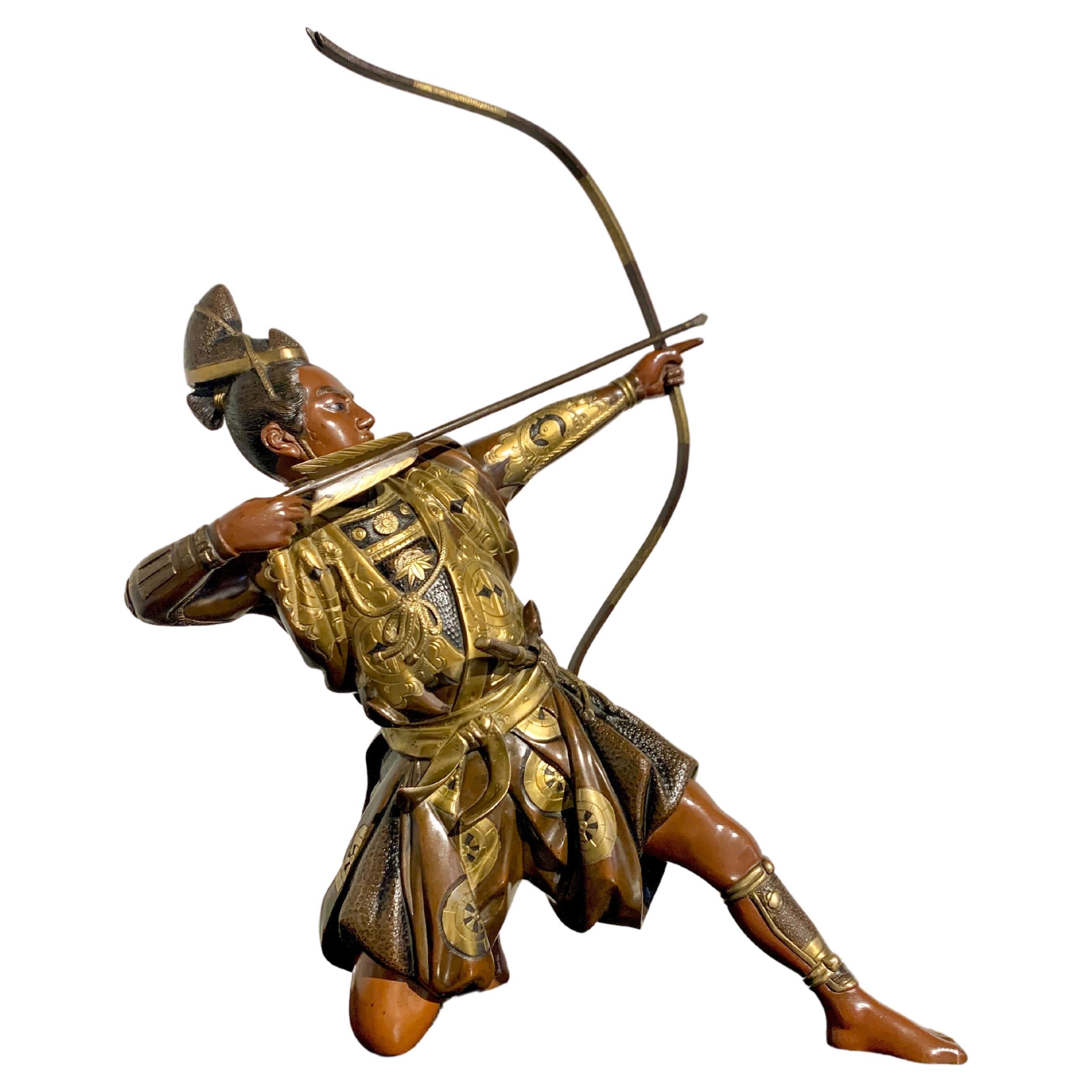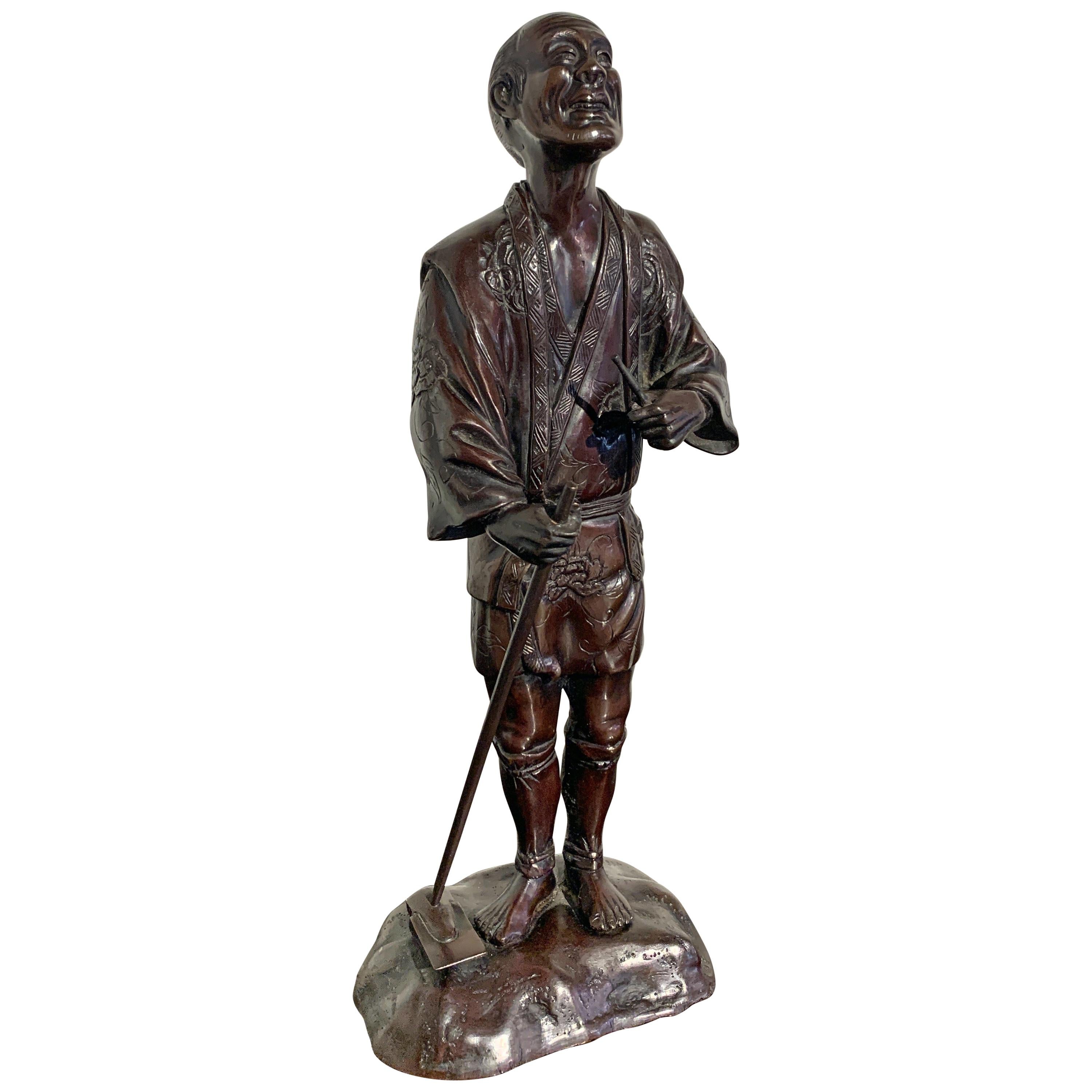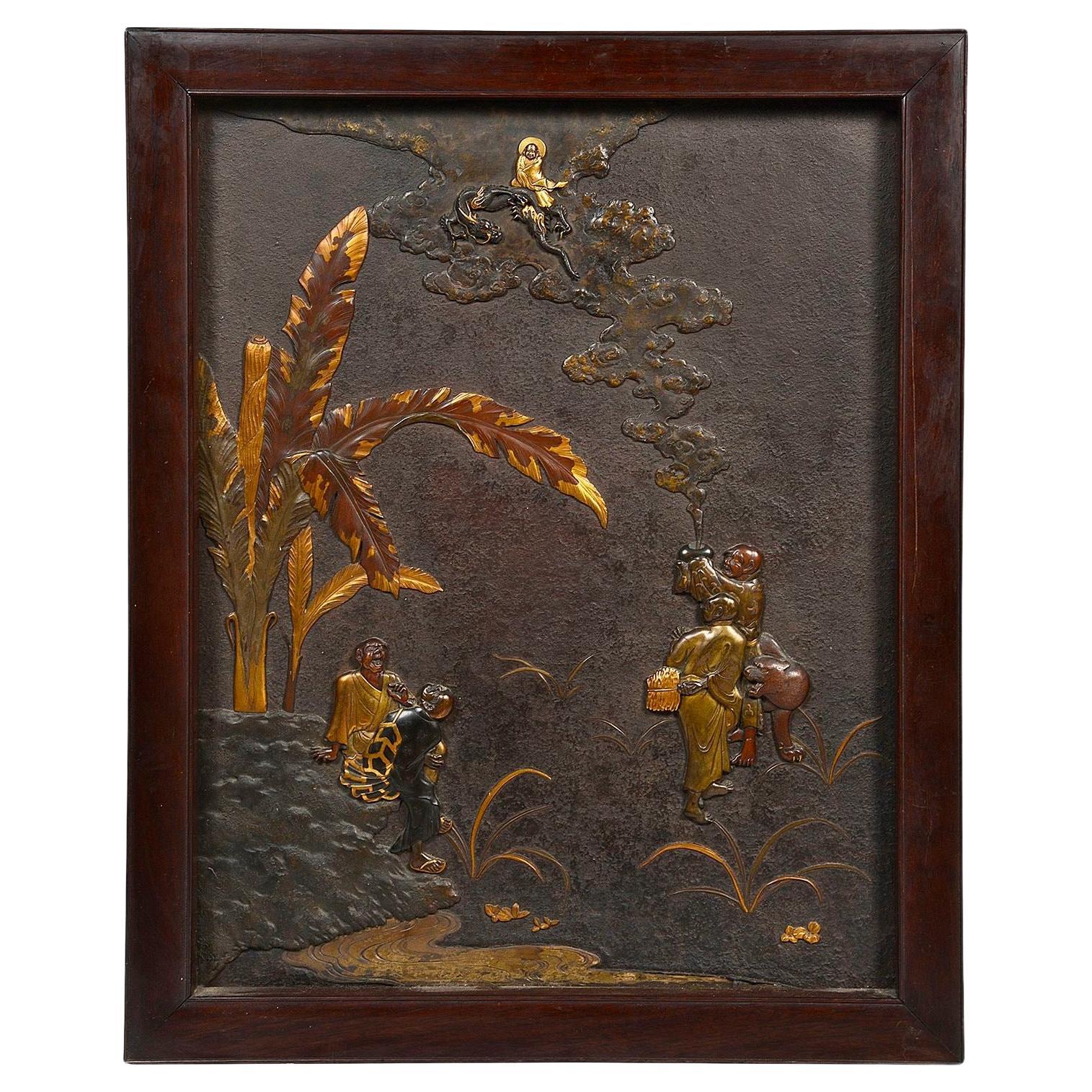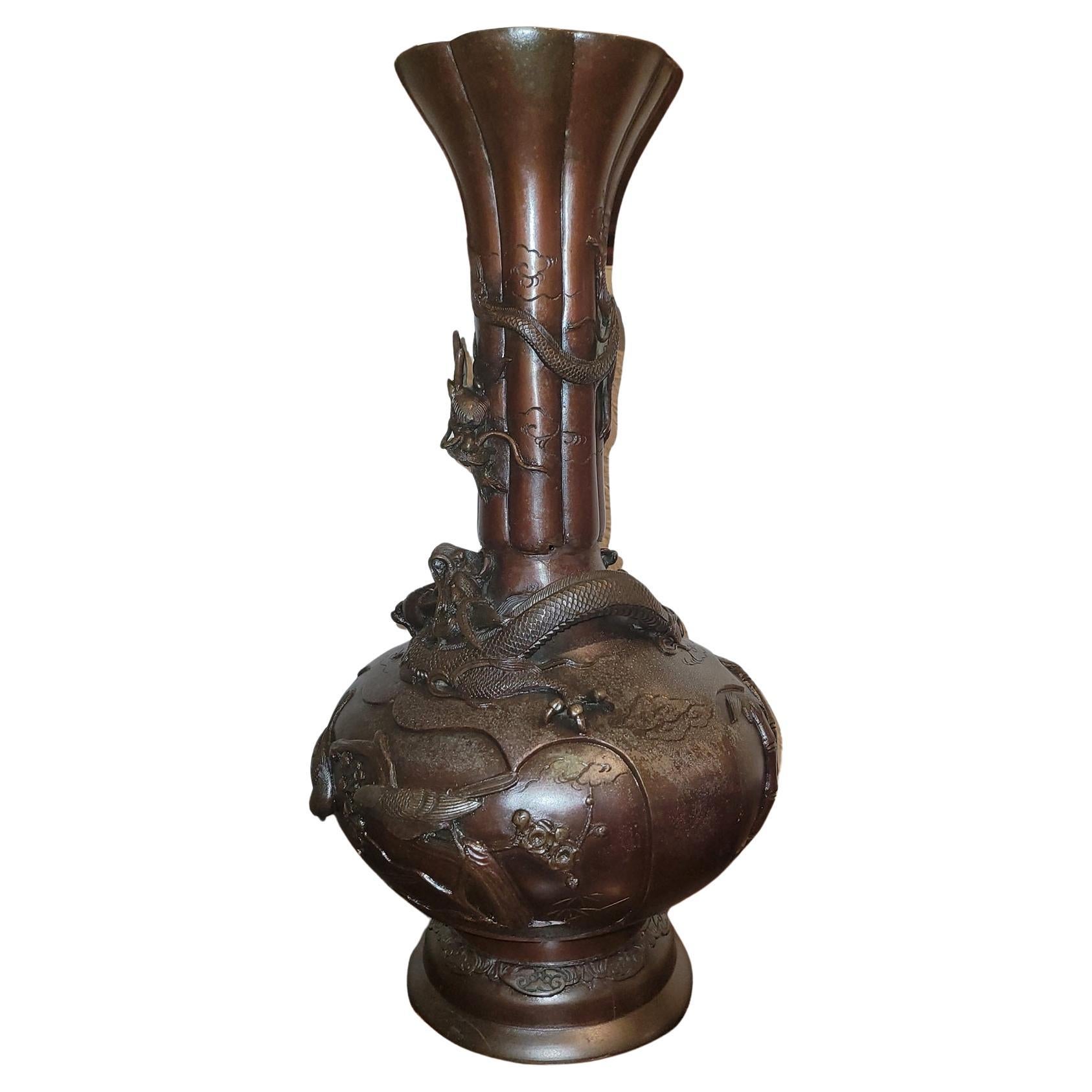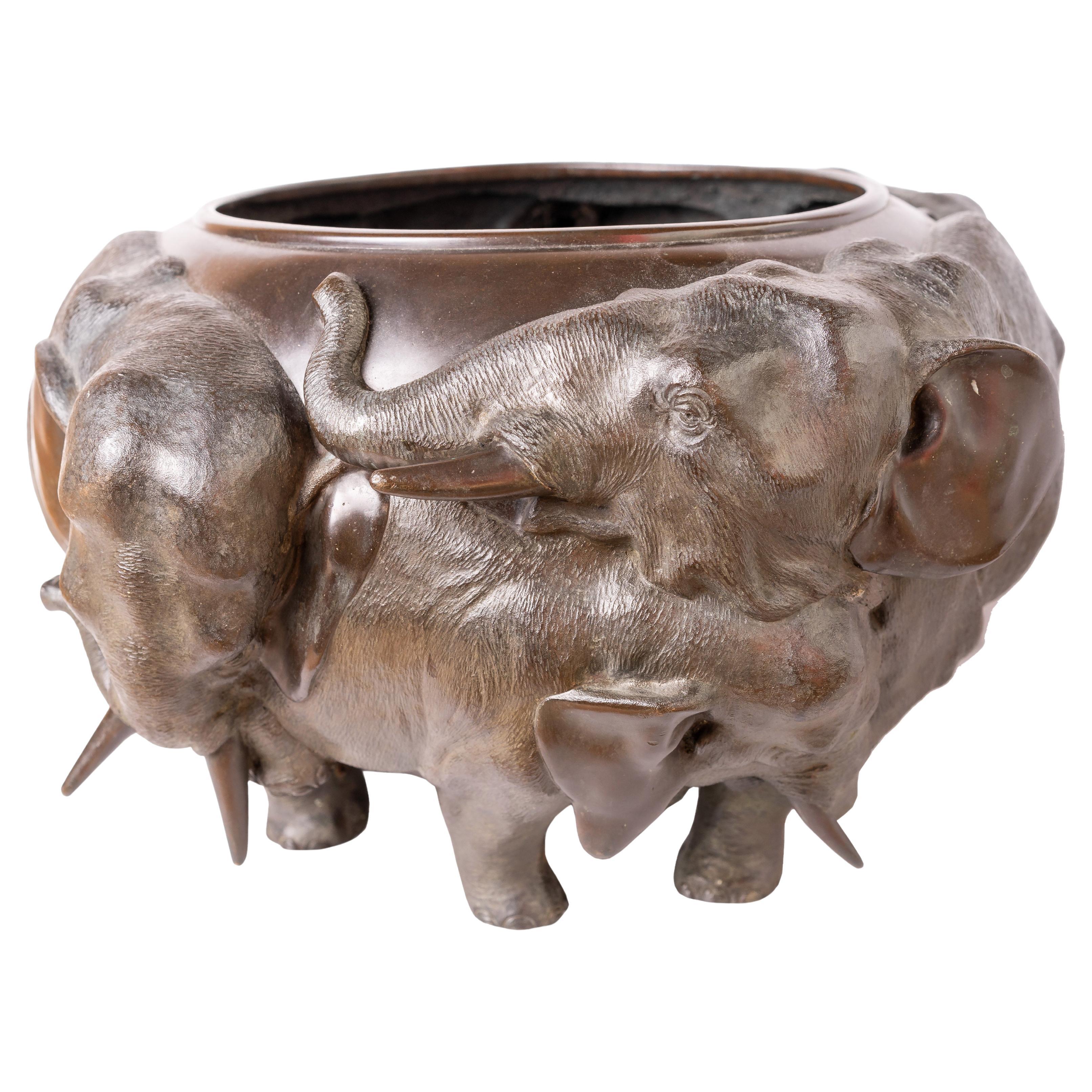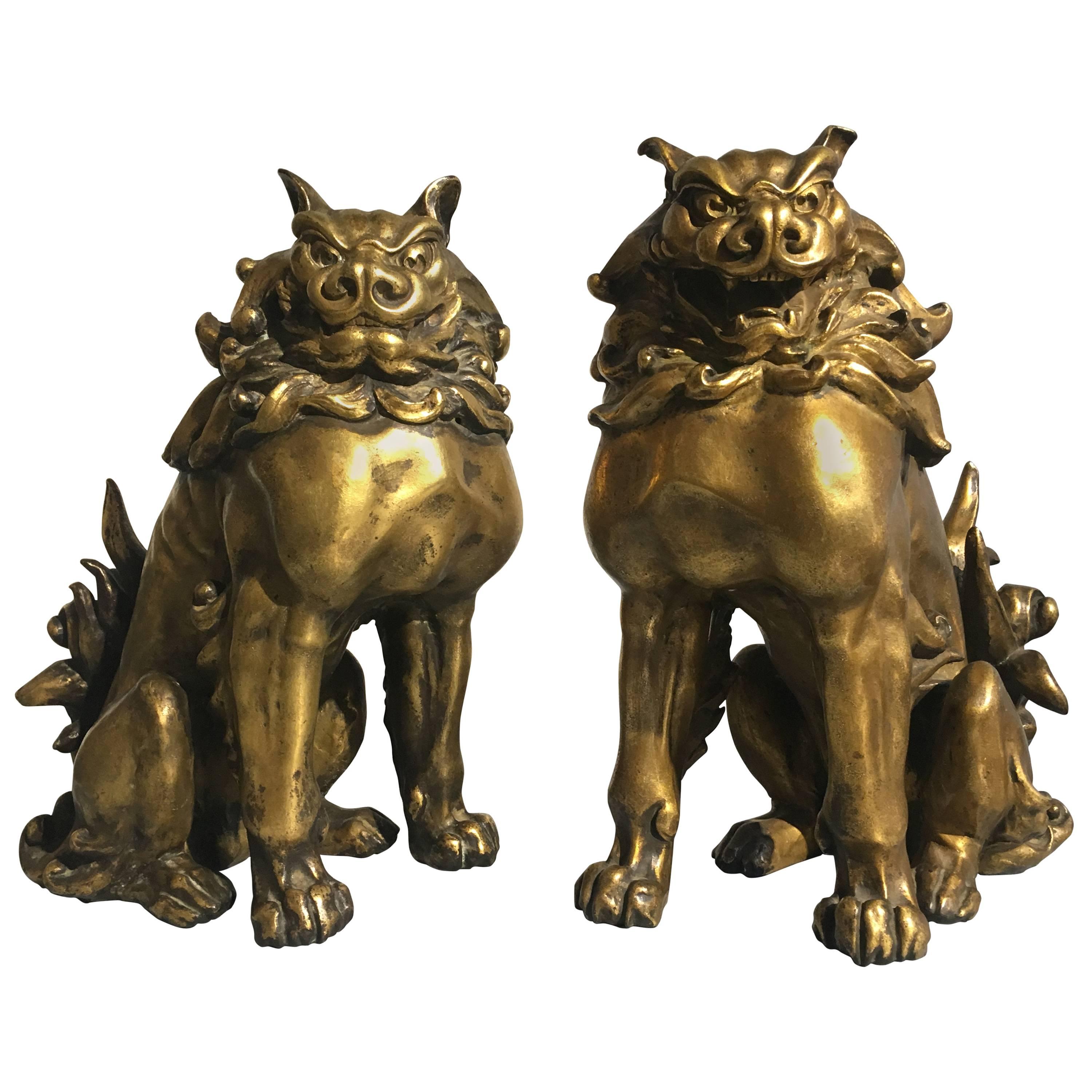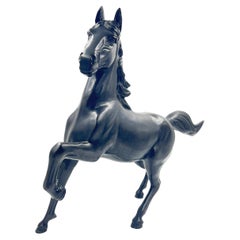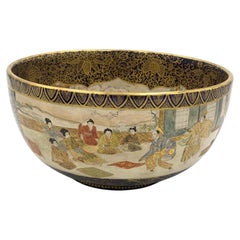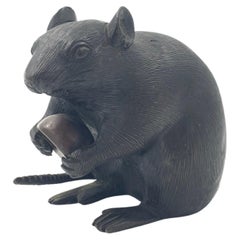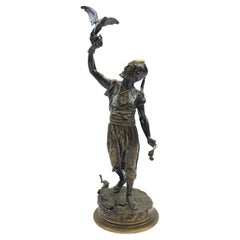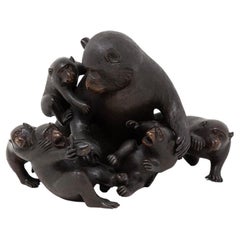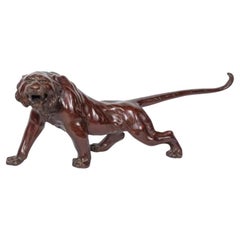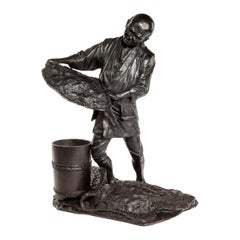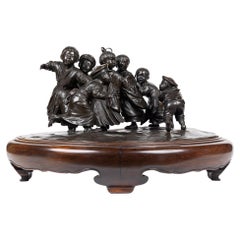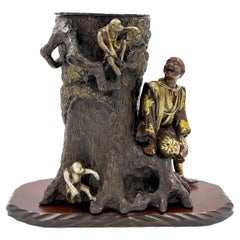
Japanese Meiji Period Figurative Bronze Sculpture
View Similar Items
Want more images or videos?
Request additional images or videos from the seller
1 of 12
Japanese Meiji Period Figurative Bronze Sculpture
About the Item
- Dimensions:Height: 12.6 in (32 cm)Width: 14.38 in (36.5 cm)Depth: 5.91 in (15 cm)
- Materials and Techniques:
- Place of Origin:
- Period:
- Date of Manufacture:19th Century
- Condition:
- Seller Location:London, GB
- Reference Number:Seller: H12761stDibs: LU6022226881472
About the Seller
5.0
Vetted Professional Seller
Every seller passes strict standards for authenticity and reliability
Established in 1989
1stDibs seller since 2021
25 sales on 1stDibs
Typical response time: 1 hour
Associations
LAPADA - The Association of Arts & Antiques Dealers
Authenticity Guarantee
In the unlikely event there’s an issue with an item’s authenticity, contact us within 1 year for a full refund. DetailsMoney-Back Guarantee
If your item is not as described, is damaged in transit, or does not arrive, contact us within 7 days for a full refund. Details24-Hour Cancellation
You have a 24-hour grace period in which to reconsider your purchase, with no questions asked.Vetted Professional Sellers
Our world-class sellers must adhere to strict standards for service and quality, maintaining the integrity of our listings.Price-Match Guarantee
If you find that a seller listed the same item for a lower price elsewhere, we’ll match it.Trusted Global Delivery
Our best-in-class carrier network provides specialized shipping options worldwide, including custom delivery.More From This Seller
View AllA Large Singed Japanese Bronze Horse Sculpture, Showa/Taisho Period
Located in London, GB
In a cantering pose large Japanese bronze sculpture, Taisho/Showa period, engraved signature to the under side.
Category
20th Century Japanese Sculptures and Carvings
Materials
Bronze
Japanese Satsuma Bowl, Meiji Period
Located in London, GB
Signed, Meiji period (late 19th century), Decorated in various coloured enamels and lavish gilt on a blue ground with panels containing samurai, ladies in kimono, the interior with a...
Category
Antique Late 19th Century Japanese Ceramics
Materials
Porcelain
$2,416 Sale Price
20% Off
Late 19th Century Japanese Bronze Okimono of a Rat Clutching a Chestnut, Meiji
Located in London, GB
Japanese bronze Okimono of a rat clutching a chestnut, Meiji period signed on the base.
Category
Antique Late 19th Century Japanese Metalwork
Materials
Bronze
Bronze Sculpture by Pierre Jules Mène, the Arab Falconer
Located in London, GB
Bronze sculpture with brown patina, representing a man and his falcon, Signed P.J Mene & Dated 1873 on the round base.
Category
Antique Late 19th Century French Figurative Sculptures
Materials
Bronze
Large Japanese Satsuma Bowl, 19th Century
Located in London, GB
Meticulously enamelled and gilt with different scenes satsuma bowl.
Category
Antique Late 19th Century Japanese Ceramics
Materials
Porcelain
$3,295 Sale Price
20% Off
Marcolini Period Meissen Porcelain Open Work Fruit Basket
Located in London, GB
Fine Marcolini Period Meissen Porcelain open work fruit basket in white, blue and gold, two crowns on each basket at the front and the revers of the basket, signed and dated on the b...
Category
Antique 19th Century French Decorative Baskets
Materials
Porcelain
You May Also Like
Japanese Meiji Period Bronze Monkey Group Sculpture Okimono Shosai
Located in Newark, England
Featuring Seven Japanese Macaques
Form our Japanese collection, we are delighted to offer this Japanese Bronze Monkey Group by Shosai. The Japanese Bronze Group displaying a male father monkey and his infants playing around and being mischievous with Persimmon fruit. The monkeys modelled as Japanese macaque monkeys (snow monkey). The bronze okimono is beautifully patinated with a highly lifelike and naturalistic casting signed to the underside Shosai 正齊鋳. The Bronze group dates to the Meiji Period (1868-1912) circa 1885.
Japanese macaque (snow monkey) is a terrestrial Old World monkey species that is native to Japan. They are known as snow monkeys because some live in areas where snow covers the ground for long periods each year hence their nickname. No other non-human primate lives further north or in a colder climate than the snow monkey. Individuals have brownish grey fur, pinkish-red faces, and short tails. Two subspecies are known and their conservation Status is of least concern. In Japan, the species is known as Nihonzaru ニホンザル, 日本 (Japan/Nihon) and saru 猿 (monkey) to distinguish it from other primates, but the Japanese macaque is the only species of monkey in Japan.
The Japanese macaque features heavily in the religion, folklore, and art of Japan, as well as in proverbs and idiomatic expressions in the Japanese language. They are often seen in paintings, block prints and represented in all manner of carvings from Okimono to netsuke. Many of these art forms reside in the world’s most famous museums and collections, some of the most prominent pieces by artists such as Mori Sosen and Kawanabe Kyosai. In Shinto belief (Japan’s indigenous religion/nature religion) legendary mythical beasts known as raiju sometimes appeared as monkeys and kept Raijin (the god of lightning/storms) company. In another well known tale the three wise monkeys who warn people to “see no evil, hear no evil and speak no evil” can be seen depicted in relief over the door of the famous Tosho-gu shrine in Nikko.
Meiji Period was an era of Japanese history that spanned from 1868 to 1912. It was the first half of the Empire of Japan, when the Japanese people began to build a paradigm of a modern, industrialised nation state and emergent great power, influenced by Western countries and aesthetics. As a result of radically different ideas, the changes to Japan were profound and it affected the social structure, politics, economy, military, and foreign relations across the board. The period corresponded to the reign of Emperor Meiji and was preceded by the Keio era and was succeeded by the Taisho era.
Cultural Art during the Meiji Period was of particular interest to the government and they overhauled the art export market which in turn promoted Japanese arts via various world’s fairs, beginning in Vienna at the world fair in 1873. The government heavily funded the fairs and took an active role organising how Japan’s culture was presented to the world including creating a semi-public company named Kiritsu Kosho Kaisha (First Industrial Manufacturing Company). The Kiritsu Kosho Kaisha was used to promote and commercialise exports of Japanese art and established the Hakurankai Jimukyoku (Exhibition Bureau) to maintain quality standards. For the 1876 Centennial International Exhibition in Philadelphia, the Japanese government created a Centennial Office and sent a special envoy to secure space for the 30,000 items that would be displayed. The Imperial Household also took an active interest in arts and crafts, commissioning works by select artists to be given as gifts for foreign dignitaries further emphasising the high quality and importance of Japanese art. Just before the end of the 19th century in 1890, the Teishitsu Gigeiin (Artist to the Imperial Household) system was created to recognise distinguished artists. These artists were selected for their exceptionally high quality wares and talent in their own industry. Over a period of 54 years Seventy artists were appointed, amongst these were ceramicist Makuzu Kozan and cloisonné enamel artist...
Category
Antique Late 19th Century Japanese Meiji Sculptures and Carvings
Materials
Bronze
A Massive Japanese Patinated Bronze Sculpture of a Tiger, Meiji Period
Located in New York, NY
A Massive Japanese Patinated Bronze Sculpture of a Tiger, Meiji Period. Signed.
Measuring an impressive 44 inches in length, this extraordinary sculpture is a striking example of t...
Category
Antique 19th Century Japanese Meiji Sculptures and Carvings
Materials
Bronze
Meiji Period Bronze Sculpture of a Labourer
Located in Lymington, Hampshire
Unusual Meiji period bronze of a labourer sieving through a woven reed mat with another at his feet and a wooden bucket at his side, signed.
Category
Antique 1880s Japanese Sculptures and Carvings
Materials
Bronze
A Large and Exceptional Japanese Meiji Period Tokyo School Bronze Sculpture
Located in New York, NY
Presenting an extraordinary Large and Exceptional Japanese Meiji Period Tokyo School Bronze Sculpture depicting a delightful ensemble of six energe...
Category
Antique 19th Century Japanese Meiji Sculptures and Carvings
Materials
Bronze
$37,050 Sale Price
35% Off
Japan bronze cicada sculpture okimono Meiji
Located in PARIS, FR
Bronze sculpture with dark brown patina of a cicada.
The cicada (in Japanese, semi) is considered as a symbol of humanity. Together with a praying mantis and a spider, they represen...
Category
Antique Late 19th Century Japanese Japonisme Sculptures and Carvings
Materials
Bronze
Japanese Meiji Period, Miyao Bronze Statue of a Musician
By Eisuke Miyao 1
Located in Brighton, Sussex
A fine quality Meiji period (1868-1912) Miyao bronze statue of a female muscian, having wonderful gilded high lights and mounted on a hardwood stand. Sign...
Category
Antique 19th Century Japanese Sculptures and Carvings
Materials
Bronze
